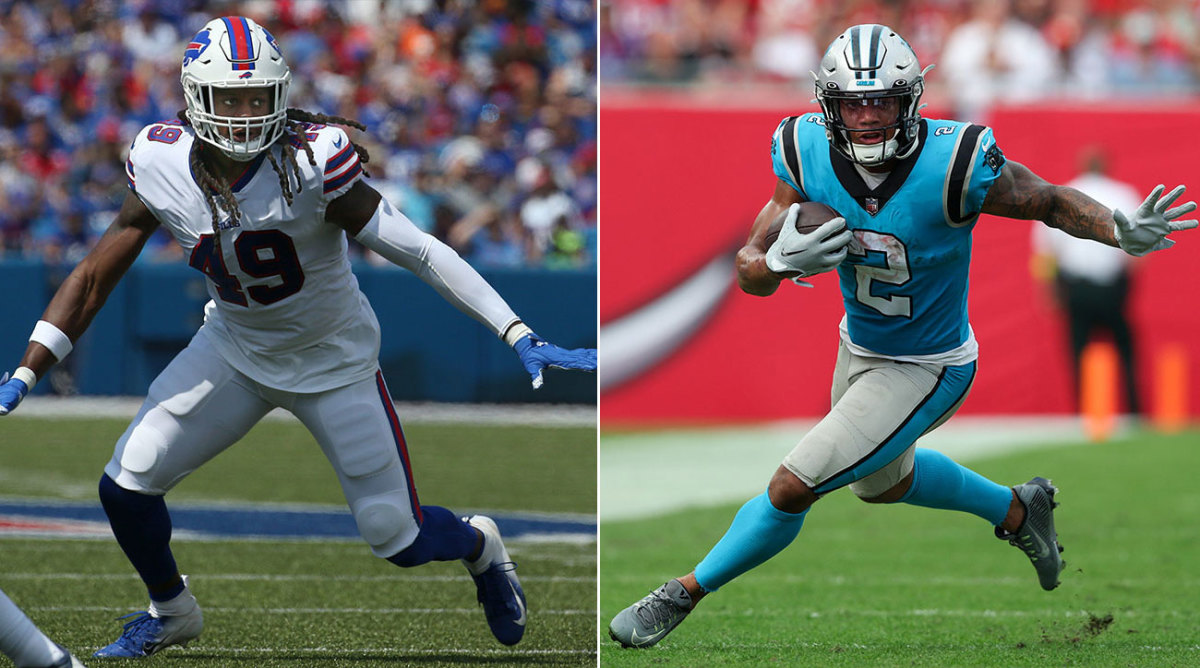The Bears Are Acing a Pivotal Offseason so Far

While March is always a dubious month for a general manager to claim victory in, it’s hard to ignore how dominant Ryan Poles has been, and what that might mean for the Bears going forward.
Last week, he dealt the No. 1 pick in the draft and stole a top wide receiver (DJ Moore) at a Hunter Renfrow price point in that deal. Through those actions, he assuaged any back-of-mind concerns quarterback Justin Fields may have had about the team’s confidence in him going into his third season. It’s hard not to see the parallels in how Poles is acting now, and how Howie Roseman supported Jalen Hurts over the past two seasons.
On Monday, at the opening of the legal tampering period, he also signed T.J. Edwards and Trumaine Edmunds to solidify the team’s linebacking corps. While these move garnered some mixed reviews, given that the Bears have so many defensive needs, let’s look at it from both an economic standpoint and a situational standpoint. While most general managers prefer to build their defenses from the line and secondary first, Poles recognized two important factors about this year’s market specifically:
• The cost of defensive linemen, especially defensive tackles, was going to be off the charts. Players like Javon Hargrave, who is 30, are getting four-year deals in the $84 million range.
• The Bears are not going to fix their entire defense in one swing, but in a market that was expected to be down (generally speaking) for non-top-of-market inside linebackers, Poles signed two of the best players available, both of whom are 26 or younger. Edmunds (four years, $72 million, $50 million in guarantees) ends up making $2 million less per season than Roquan Smith, whom the Bears traded away last year for a second-round pick. Smith also earned $10 million more in guarantees than Edmunds in the contract he signed with the Ravens in January, and Edmunds specifically fits what Matt Eberflus wants out of his defense.
So, the Bears got Edmunds and T.J. Edwards for $24 million in 2023 (plus whatever they can add with Baltimore’s second-round pick), while the Ravens have only Smith.

The Bears share a division with the Packers’ Matt LaFleur (a Kyle Shanahan disciple) and Vikings’ Kevin O’Connell (a Sean McVay disciple). While both teams approach their scheme differently, both can thrive by using their personnel to pin teams into a disadvantageous defensive alignment and hammer them (by running at a nickel front, for example, or passing on a base front). As we wrote about the off-ball linebacker renaissance in 2021, those who can cover well are becoming increasingly valuable because they mitigate some of the damage a defense takes if they’re stranded. Edmunds and Edwards are two of the best coverage linebackers in the NFL.
They also contend with the Lions, whose offensive line is so good that it’s almost impossible to even the playing field by blasting free-agency cash at the problem (especially with defensive tackles going for as much as they are right now). Eberflus, who has made a career out of strategically deploying undermanned assets in his front seven (we wrote a little about that here), could probably make a handful of good off-ball linebackers just as effective against the run as one very expensive interior lineman.
This is where we can effectively separate general managers who win March and win again in September and beyond, from general managers who specifically try to win March and figure out the rest later on.
Poles’s focus has been obvious: young, talented players under market-resetting cost. Moore, who would have put a sizable dent in the wide receiver market had he been a free agent last year, is another perfect example.
When we (football analysts) look at free agency, we can sometimes have a bad habit of looking at different phases of the offseason in a binary way. It was either good or bad. It solved the problem or it did not.
Coming into the offseason, Poles’s team had a great deal of questions, dozens of glaring holes on the roster and fair concerns about how they might try to approach it all. Before free agency has even officially started, the Bears have temporarily stabilized the quarterback position and generated an organization-wide confidence in Justin Fields, created one of the 10 best groupings of skill-position talent in the NFL and anchored the linebacking corps with two young players who will help directly target some of the strategic advantages their divisional opponents deploy (and, really, since most of the league uses a McVay or Shanahan playbook, almost all of their opponents).
There are still plenty of questions remaining, but Poles has answered the most critical one: whether he is up to the task of getting it all done.
